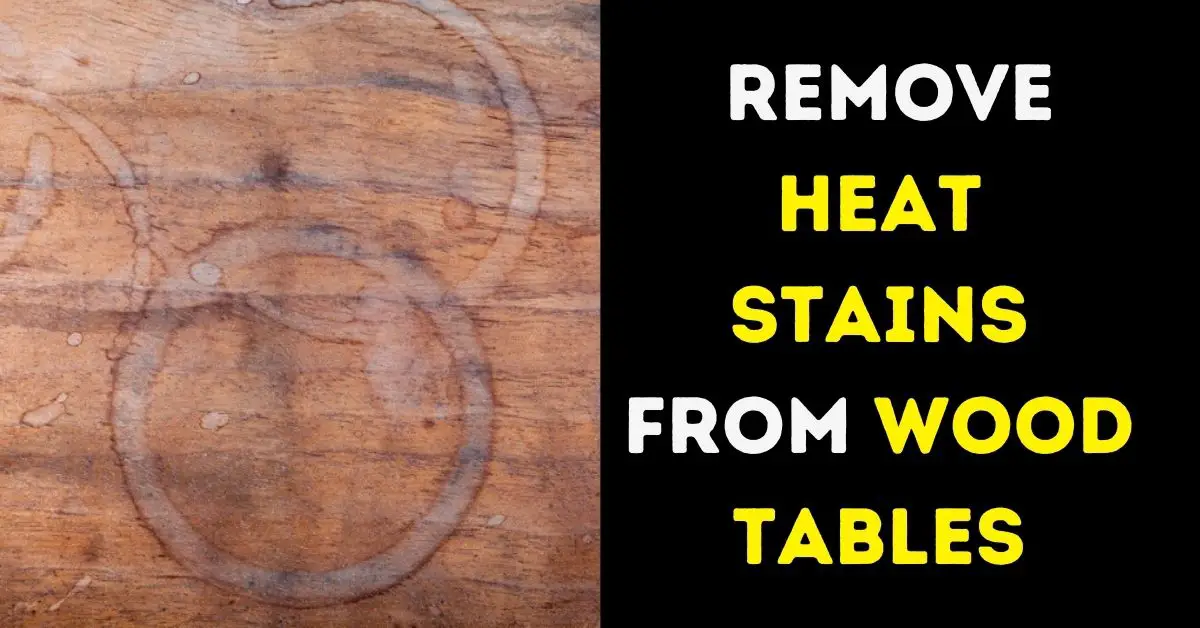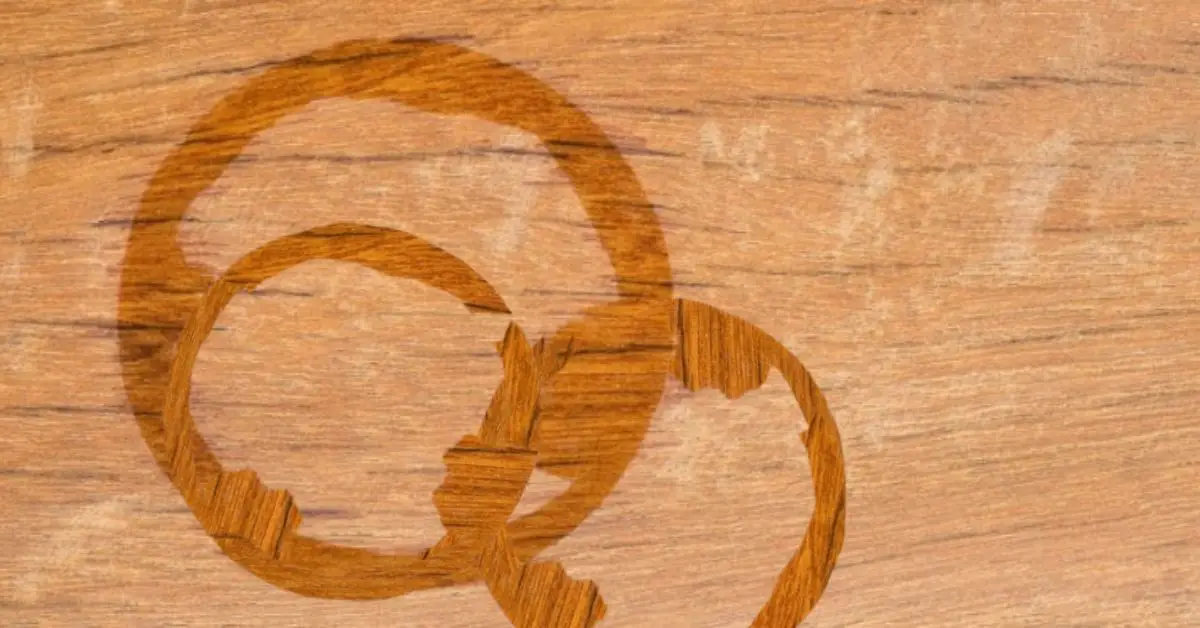
Tackling those pesky heat stains that can mar your wood table’s beauty is essential. Heat stains, often caused by hot dishes and cookware, can lead to permanent damage if ignored. In this post, I’ll provide a concise overview of effective steps to restore your wood table’s pristine appearance. Let’s get started!
How Do You Remove Heat Stains from Wood Tables?

Gathering Your Supplies
List of materials and tools needed for removing heat stains from your wood table, having the right supplies on hand is crucial. Here’s what you’ll need:
- Clean, soft cloths or microfiber towels
- An iron (for Method 1)
- Baking soda and toothpaste (for Method 2)
- Mayonnaise (for Method 3)
- Protective gloves
- A mild wood cleaner or furniture polish
- Fine-grit sandpaper (optional, for stubborn stains)
- Furniture wax or polish (for finishing touches)
Where to Find These Supplies
You can easily find most of these supplies at your local grocery store, hardware store, or even in your own kitchen pantry. For specialty wood cleaners or waxes, consider visiting a home improvement store or searching online for convenient options.
Preparing the Table and Surrounding Area
Before diving into the stain removal process, it’s essential to protect your table and the area around it. Here’s how:
- Lay down a plastic or vinyl tablecloth to safeguard the table’s surface.
- Clear the immediate area of any items that might get in your way during the stain removal process.
- Use old newspapers or additional cloths to cover the floor or surrounding furniture to catch any drips or spills.
How to Determine the Depth of the Heat Stain
Understanding the extent of the heat stain is critical for choosing the most effective removal method. Here’s how to assess its severity:
- Examine the stain closely to determine if it’s superficial or has penetrated the wood.
- Gently touch the stained area to feel for any texture changes or irregularities.
- Take note of the stain’s color and size, as these factors can help you decide which method to use.
Different removal methods are suitable for varying degrees of heat stain severity. By accurately assessing the stain’s depth and characteristics, you’ll be better equipped to select the method that will yield the best results.
Method 1: Using an Iron and Cloth
Step-by-step instructions for this popular method
- Start by plugging in the iron and setting it to a low to medium heat setting (no steam).
- Place a clean, white cloth over the heat stain on your wood table.
- Gently run the heated iron over the cloth-covered stain in circular motions for about 15-30 seconds.
- Lift the cloth periodically to check progress, making sure not to overheat or scorch the wood.
- Continue until the heat stain gradually disappears, usually within a few minutes.
- If the stain persists, repeat the process until it’s completely gone.
Tips for effectively using an iron to remove heat stains
- Always use a white cloth to avoid any potential color transfer onto the wood.
- Monitor the heat and avoid using high settings to prevent further damage.
- Maintain a gentle, steady hand while applying the iron to prevent scorching.
- Patience is key; avoid rushing the process, as gradual heat is more effective.
Precautions to prevent further damage
- Never use a steam setting on the iron, as moisture can worsen the stain.
- Keep the iron moving to distribute heat evenly and prevent localized damage.
- Be cautious with delicate wood finishes; test the method in an inconspicuous area first.
Method 2: Baking Soda and Toothpaste
Step-by-step instructions for using a baking soda and toothpaste mixture
- Create a paste by mixing equal parts of baking soda and non-gel toothpaste.
- Apply the paste to the heat stain using a soft, damp cloth.
- Gently rub the paste into the stain in a circular motion, working from the center outward.
- Continue rubbing until the stain begins to fade.
- Wipe away the paste residue with a clean, damp cloth.
- Repeat the process if necessary until the heat stain is completely removed.
Advantages of this method
- Baking soda and toothpaste are readily available and inexpensive.
- The mild abrasiveness of the paste helps lift the stain without damaging the wood.
When and why to use this approach
- This method is particularly useful for light to moderate heat stains.
- It’s a gentle approach suitable for a variety of wood finishes.
Method 3: Mayonnaise
Step-by-step instructions for applying mayonnaise to heat stains
- Apply a generous amount of mayonnaise directly onto the heat stain.
- Spread the mayonnaise evenly over the stain using a soft cloth or your fingers.
- Leave the mayonnaise in place for several hours or overnight.
- Wipe away the mayonnaise with a clean, damp cloth.
- Repeat the process if needed until the stain disappears.
Benefits of using mayonnaise
- Mayonnaise is a safe and gentle option for removing heat stains.
- It often works well on both light and dark stains.
Special considerations for certain wood finishes
- Be cautious with porous or unfinished wood; mayonnaise can leave behind residues.
- Test in an inconspicuous area first to ensure compatibility with your wood finish.
Additional Tips and Tricks
Alternative Methods for Stubborn Heat Stains
- If the heat stain persists after trying the methods mentioned above, consider these alternatives:
- Vinegar and Olive Oil: Mix equal parts white vinegar and olive oil, apply to the stain, and let it sit for a few hours. Wipe away gently.
- Commercial Wood Stain Removers: There are various wood stain removers available on the market. Follow the product’s instructions carefully.
- Steel Wool: For very stubborn stains on hard finishes, use fine-grade steel wool to gently rub away the stain. Be cautious and use it sparingly.
Preventive Measures to Avoid Future Heat Stains
- Prevention is often the best remedy. Consider these tips to protect your wood table from heat stains:
- Use Coasters: Place coasters under hot dishes, mugs, and cookware to create a barrier between the heat source and the wood surface.
- Heat-Resistant Mats: Invest in heat-resistant mats or trivets to provide extra protection during meals.
- Tablecloths or Placemats: Use tablecloths or placemats for added safeguarding during larger gatherings.
- Regular Polishing: Apply a wood polish or wax to your table periodically to create a protective layer.
- Timely Cleanup: If spills occur, wipe them up promptly to prevent heat stains from forming.
Cleaning and Maintaining Your Wood Table
- Proper care and maintenance will extend the life of your wood table and reduce the likelihood of heat stains:
- Dusting: Regularly dust your table to prevent dust and debris buildup, which can lead to scratches.
- Cleaning: Use a mild, wood-specific cleaner or a mixture of water and a few drops of dish soap for routine cleaning.
- Avoid Excess Moisture: Minimize contact with excessive moisture or spills, as these can cause warping and stains.
- Polishing: Apply a wood polish every few months to nourish and protect the wood’s surface.
- Avoid Direct Sunlight: Position your table away from direct sunlight to prevent fading and discoloration.
By following these guides and tips and tricks into your wood table care routine, you can keep your table looking its best and minimize the risk of heat stains in the future.






